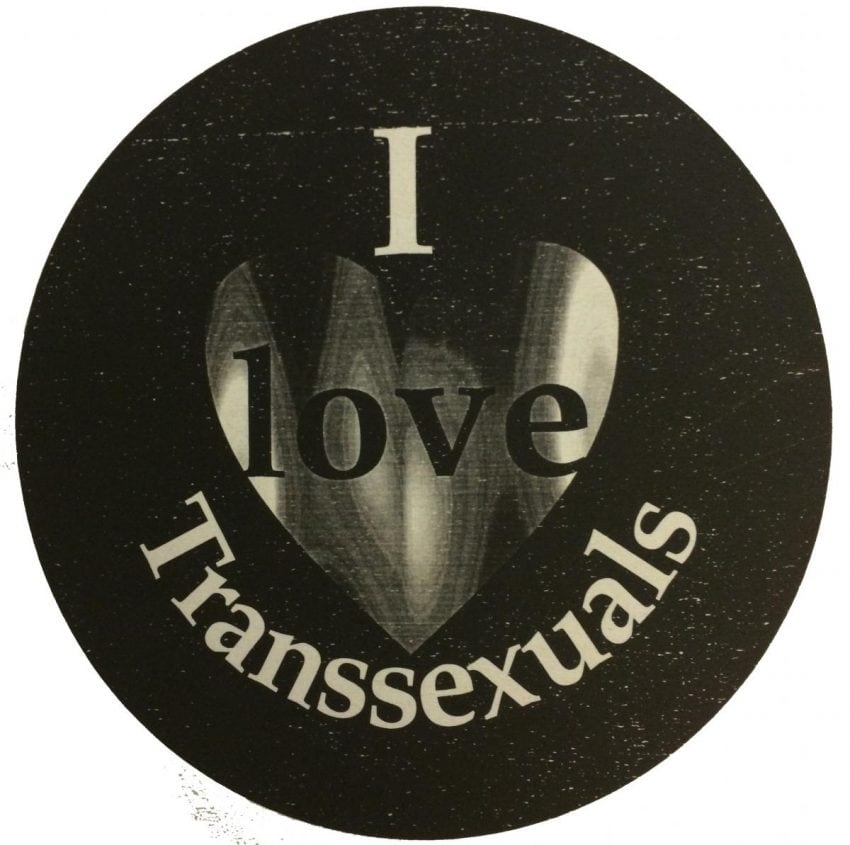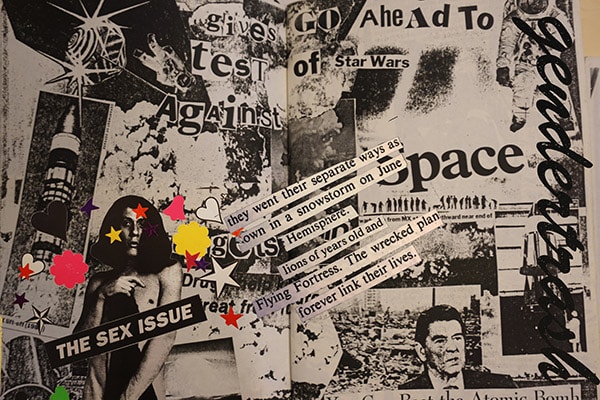
Written by Laura Arner, intern from University of Toronto Sexual Diversity Studies
Zines! (Pronounced: “zeen”) They aren’t a new concept, but they’re breaking new ground in terms of distribution, content, and themes. What were once anarchist titles of the 70’s underground punk scene, have evolved into a new medium of self expression and artistry. A “zine” describes any sort of independently published small-scale non-commercial works containing any number of personal and stylized texts and images. They range from photography, to collage, “borrowed” text to academic pieces, art and poetry – really any sort of printed collection of a personal identity. They are small-print, for the most part, yet many have had an extreme following and fanbase. Many are completely anonymous. In the archives, we have a collection of past zines that contain queer themes, as well as the classic homocore punk themes that the zine community was borne from. 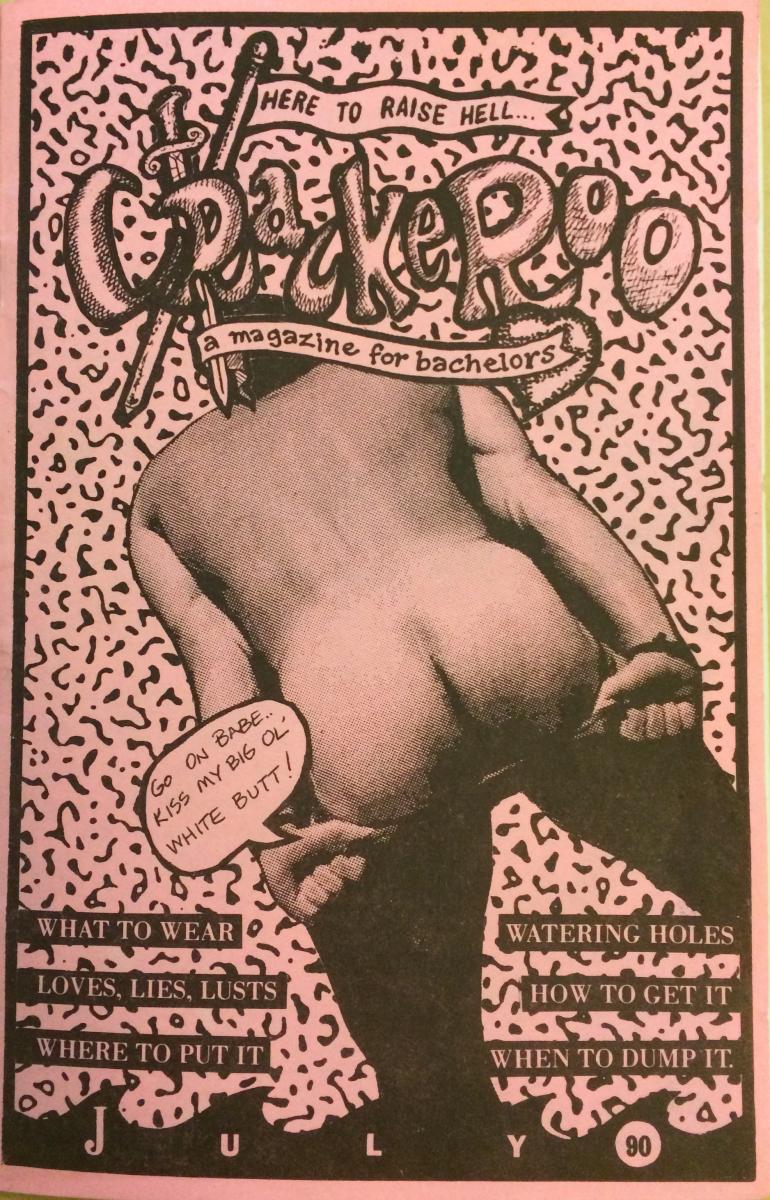 1) Crackaroo Printed on coral pink paper and featuring a shapely bottom on its cover, this flashy zine was printed July 1990 out of a small independent press on Church Street. The logo and catchphrase declares “Here to raise hell…. CRACKAROO, a magazine for bachelors”. This particular issue offers a CRACKAROO t-shirt, horoscopes (my Gemini status granted me: “Only you can mix plaids & girl you look fine”), interviews with various queers of the time, a satirical essay by Associate Professor Garth Fartpants, and much more.
1) Crackaroo Printed on coral pink paper and featuring a shapely bottom on its cover, this flashy zine was printed July 1990 out of a small independent press on Church Street. The logo and catchphrase declares “Here to raise hell…. CRACKAROO, a magazine for bachelors”. This particular issue offers a CRACKAROO t-shirt, horoscopes (my Gemini status granted me: “Only you can mix plaids & girl you look fine”), interviews with various queers of the time, a satirical essay by Associate Professor Garth Fartpants, and much more. 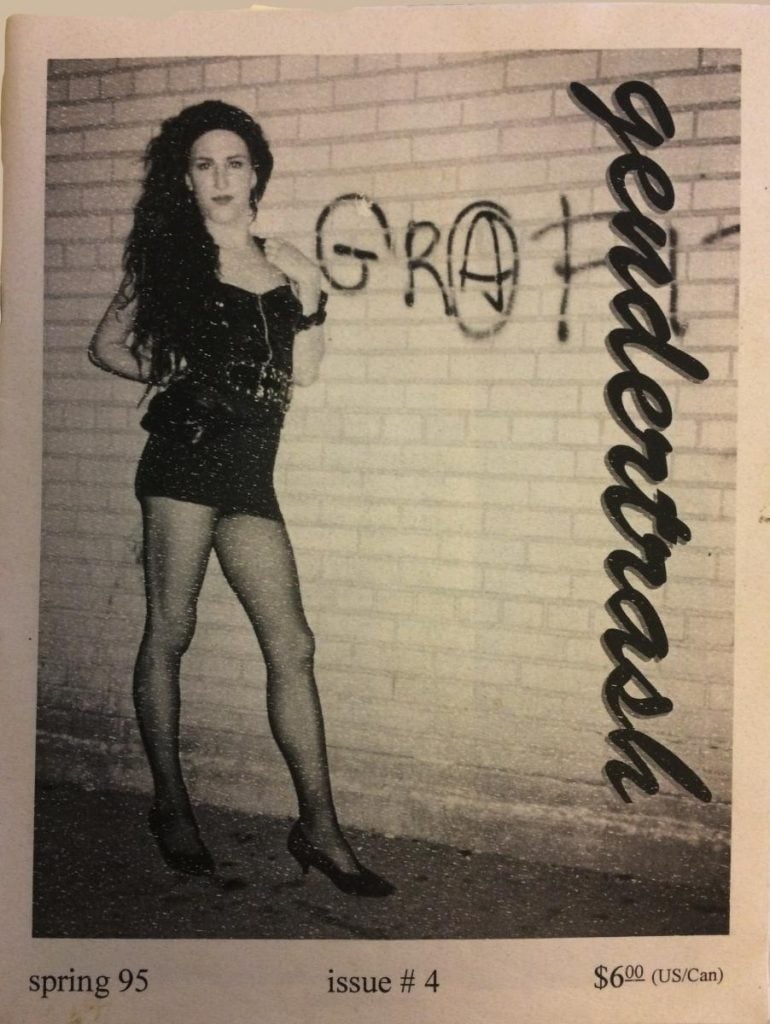 2) Gender Trash From Hell GTFH is a zine “devoted to the issues and concerns of transsexuals”. Once available for $2.50 an issue, it contains art, essays, stories, poetry, topics surrounding electrotherapy, discrimination, passing, and self-discovery. This zine is an emotional but gripping account of trans experiences in Toronto in the early 90s. GTFH is contributed to by one of the zine world’s most famous: G.B. Jones. Born in Bowmanville Ontario, Jones is known for her radical contributions to the queer-punk scene of Canada and beyond. As an artist, filmmaker, singer and actor, the still-active Jones made an enormous contribution to the zine scene for many years.
2) Gender Trash From Hell GTFH is a zine “devoted to the issues and concerns of transsexuals”. Once available for $2.50 an issue, it contains art, essays, stories, poetry, topics surrounding electrotherapy, discrimination, passing, and self-discovery. This zine is an emotional but gripping account of trans experiences in Toronto in the early 90s. GTFH is contributed to by one of the zine world’s most famous: G.B. Jones. Born in Bowmanville Ontario, Jones is known for her radical contributions to the queer-punk scene of Canada and beyond. As an artist, filmmaker, singer and actor, the still-active Jones made an enormous contribution to the zine scene for many years.  3) STAMMER Published in July 1990, The Sex Issue of STAMMER is raunchy and riske throughout. It’s a larger zine, at a standard 8.5×11 size instead of the quarter or half sheet publications usually used for zines. This zine, which could be bought for $2.25, is chock-full of pornographic images, artworks poetry, and essays. It also features erotic stories and interactive pieces.
3) STAMMER Published in July 1990, The Sex Issue of STAMMER is raunchy and riske throughout. It’s a larger zine, at a standard 8.5×11 size instead of the quarter or half sheet publications usually used for zines. This zine, which could be bought for $2.25, is chock-full of pornographic images, artworks poetry, and essays. It also features erotic stories and interactive pieces.  4) Dr Smith Chock-full of collages, cartoons, and handmade ads for various Queen Street shops such as Dragon Lady Tattoos and Vortex Records, this cute, oversize, upbeat zine series includes chilling local newspaper clippings about sex, assault, murder, and Queerphobia, smashed together with cutouts of sexy bodies and eye-candy. It also includes personal essays and socially-driven artwork. For other information and access to Queer zines, visit The ArQuives zine archives and take a look. You can also access zines (Queer and otherwise) in many locations such as The Queer Zine Archive Project (QZAP), Toronto Comic Book Arts Fair (TCAF), Broken Pencil Magazine, and Glad Day Bookstore. The Queer Zine Archive Project (established November 2003) is an online archive database that provides open, free-use, searchable content from zinesters ranging from the world-reknown to the local one-offs. They accept any and all Queer-related zine donations in order to preserve a “living history” through zines that offer to historical Queerness. Glad Day Book Shop is the oldest LGBTQ bookshop in the world. Established in 1970, it holds the largest collection of Queer titles, including zines, comics, and collectibles. It’s located on 598A Yonge Street. Broken Pencil Magazine is a Toronto-based zine-themed magazine created in 1995 with the aim to feature local and global zines, essays, zine reviews, and zine-related news and events. They dub themselves “the magazine of zine culture and the independent arts”. Toronto Comics Arts Festival (TCAF), held every year since 2003 and features hundreds of comics, art, zines, and their creators. The festival is two days long and has been held at the Toronto Reference Library since 2009. They honour and feature the diverse world of creative arts and writing, both in the Queer sphere and beyond. And of course, The ArQuives features a huge array of zines as well! Contact us at queeries@arquives.ca to flip through the hundreds of available zines, comics, pamphlets, monographs, and other Queer-themed vertical files.
4) Dr Smith Chock-full of collages, cartoons, and handmade ads for various Queen Street shops such as Dragon Lady Tattoos and Vortex Records, this cute, oversize, upbeat zine series includes chilling local newspaper clippings about sex, assault, murder, and Queerphobia, smashed together with cutouts of sexy bodies and eye-candy. It also includes personal essays and socially-driven artwork. For other information and access to Queer zines, visit The ArQuives zine archives and take a look. You can also access zines (Queer and otherwise) in many locations such as The Queer Zine Archive Project (QZAP), Toronto Comic Book Arts Fair (TCAF), Broken Pencil Magazine, and Glad Day Bookstore. The Queer Zine Archive Project (established November 2003) is an online archive database that provides open, free-use, searchable content from zinesters ranging from the world-reknown to the local one-offs. They accept any and all Queer-related zine donations in order to preserve a “living history” through zines that offer to historical Queerness. Glad Day Book Shop is the oldest LGBTQ bookshop in the world. Established in 1970, it holds the largest collection of Queer titles, including zines, comics, and collectibles. It’s located on 598A Yonge Street. Broken Pencil Magazine is a Toronto-based zine-themed magazine created in 1995 with the aim to feature local and global zines, essays, zine reviews, and zine-related news and events. They dub themselves “the magazine of zine culture and the independent arts”. Toronto Comics Arts Festival (TCAF), held every year since 2003 and features hundreds of comics, art, zines, and their creators. The festival is two days long and has been held at the Toronto Reference Library since 2009. They honour and feature the diverse world of creative arts and writing, both in the Queer sphere and beyond. And of course, The ArQuives features a huge array of zines as well! Contact us at queeries@arquives.ca to flip through the hundreds of available zines, comics, pamphlets, monographs, and other Queer-themed vertical files. 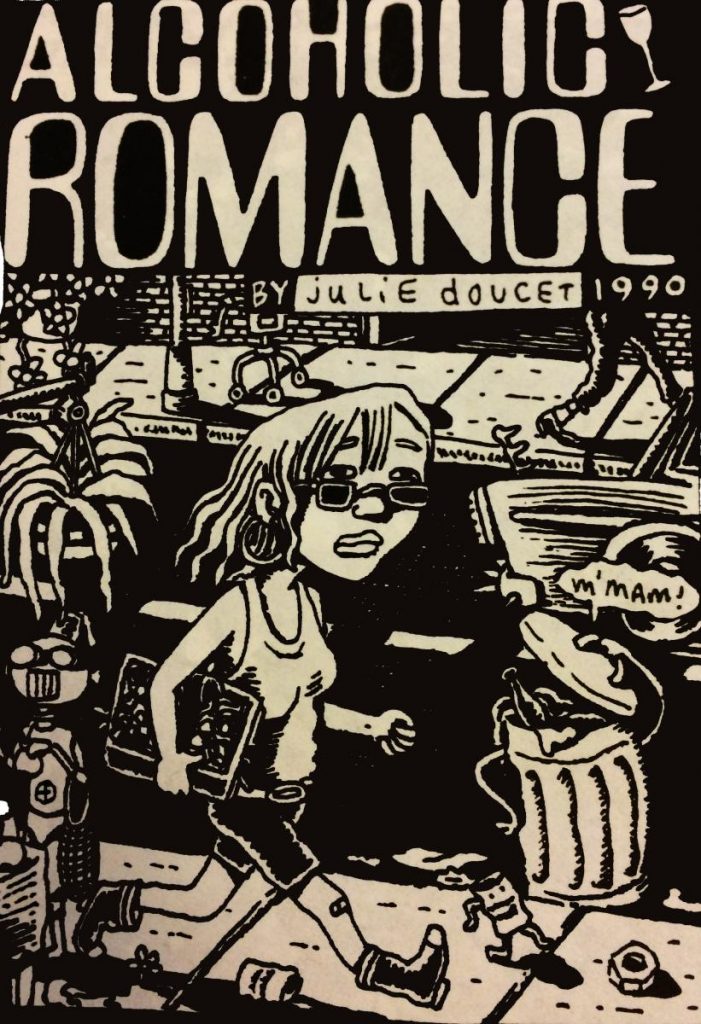
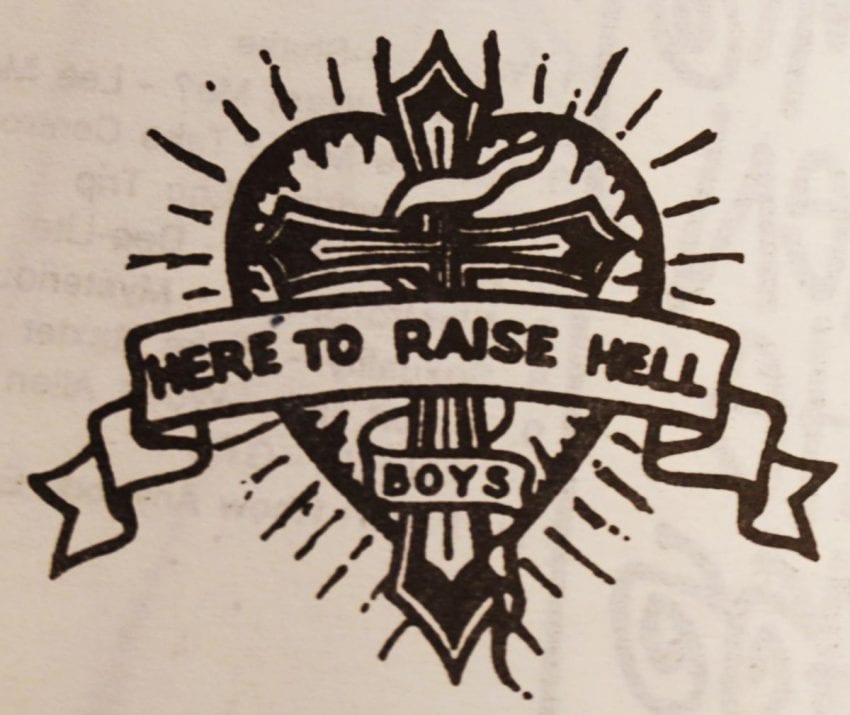 Remember those? As they make their way back into popularity, let’s take a look back at some of the original Queer zines:
Remember those? As they make their way back into popularity, let’s take a look back at some of the original Queer zines: 